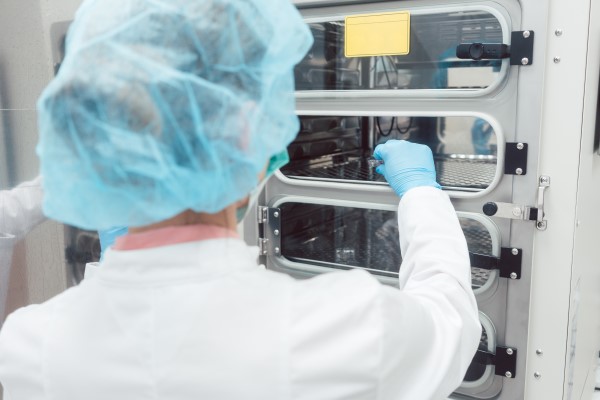
Incubators are used within various industries such as the pharmaceutical and biotech. In this case we will look into the microbiology science field.

Incubators are used within various industries such as the pharmaceutical and biotech. In this case we will look into the microbiology science field.
Microbiology focuses on microorganisms such as bacteria, unicellular organisms and viruses. Inoculation is the study of introducing microorganisms into environments where they will grow and reproduce. This is known as cell culture or microbiological culture. Many vaccines come from cell cultures.
An incubator is the apparatus in which media inoculated with microorganisms are cultivated under optimised controlled conditions:
The basic environmental requirements for optimal cell growth are the following:
A key element to establish the ideal growth environment is the right pH value, this may vary depending on the cultures. The culture media phenol red is frequently used to ensure that the pH levels are correct (yellow for low pH levels, purple for high pH levels and red for pH values at 7).
There are various types of media used for inoculation. Agar plates are the most common medium which are used for growing bacteria and other microorganisms. An agar plate is a petri dish containing agar plus nutrients. Basal Medium Eagle (BME) is a widely used synthetic basal medium for supporting the growth of many different mammalian cells.
In order to create a pH value of 7.4, for BME, the following environmental conditions are required:
The issue with this setup is, depending on the incubator, that condensation can easily occur. With a temperature of 37°C and a relative humidity level of 95%rh, the dew point temperature (temperature at which condensation occurs) is roughly 36°C. Traditionally the room where the incubator is located will be at 23°C. This means that depending on the insulation of the incubator condensation can occur, insulation independent, opening the door will also create condensation.
Whereas 37°C is not a challenge for temperature measurement, it does get more complicated for relative humidity and CO2.
Relative humidity is mostly measured with capacitive sensors. Due to their construction, capacitive sensors tend to drift at high humidity levels resulting in more frequent calibration requirements. Condensation can also lead to the sensor failures, so the sensor placement within the incubator is key. Even at high relative humidity levels with condensation, the proven Rotronic HygroMer capacitive senor built onto the RMS-HCD-s or RMS HCD-IC102 probe offers an amazing performance
Find out more about relative humidity measurement here. The RMS-HCD probes measure both temperature and relative humidity (or dewpoint) and thanks to the digital communication, hot swapping these digital probes allow for almost no downtime and complete data integrity within the Rotronic Monitoring System software, where a probe replacement is automatically recognised. The RMS-HCD probes can measure from -100…200°C and from 0…100%rh.
Measuring carbon dioxide can also be tricky at high relative humidity level with condensation, depending on the measurement technology used. Infrared absorption (IR) is the most common sensing technology used for CO2 measurement, find out more about how Rotronic measure CO2 here. The issue with infrared absorption, is that if condensation occurs, then the light source can be refracted by the water and not reach the light detector. To avoid this issue, the RMS-CCA-S-20X is heated to avoid the formation of condensation. Should condensation occur it is most likely that there will be positive gas reading and not a sensor failure. Sensors will recover from condensation once they have warmed up sufficiently to drive off the water. Rotronic use an infrared absorption to ensure an accurate and precise measurement of CO2. The RMS CCA-S-20X Set sensor can measure from 0…20%CO2.
To reproduce a similar environment as within a mammal’s body, where the oxygen concentrations range between 1 and 12%, much lower than within the atmosphere that is at 21%. Oxygen levels can be controlled within an incubator by adding nitrogen (N2) gas, this reducing the amount of oxygen. Rotronic also offer a solution for monitoring O2 with the GCA-S-O2-XX21-SET. The GCA-S-O2-XX21 sensor can measure from 0…21%O2.

Various companies provide incubators such as Adolf Huhner AG, Binder GmbH, Fischer Scientific, Memmert… Normally the incubators will have an optional analogue output so that the incubator readings can processed. RMS offers analog to digital converters to integrate the outputs into RMS. Via the Application Programming Interface (API) of RMS as well as the AtmoWEB Software from Memmert, RMS can also monitor the following points directly from your Memmert chamber:
The Rotronic Monitoring System (RMS) is a GAMP©5 category 4 software combined with category 1 hardware, helping users monitor their GxP compliant applications, looking into the critical quality attributes and monitoring critical process parameters, helping focus on patient safety, product quality and data integrity and compliant to EudraLex Annex 11 and FDA 21 CFR Part 11.